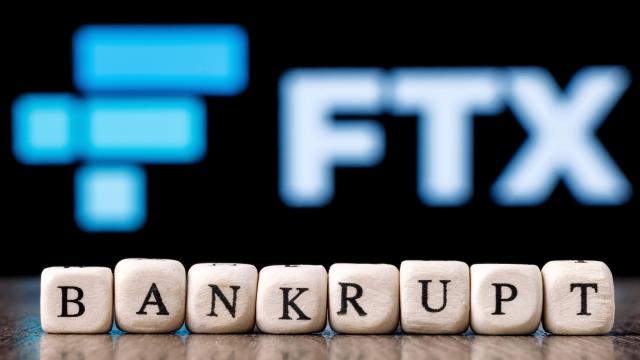Just how bad do you have to be for a 40-year veteran of corporate undoings to call you one of the most faulty, most compromised entities he’s ever seen? John J. Ray III was tapped to handle the chapter 11 bankruptcy proceedings of FTX’s multiple major corporate entities. In his latest bankruptcy filing released Thursday, Ray noted that in his 40 years of legal and restructuring experience:
“Never in my career have I seen such a complete failure of corporate controls and such a complete absence of trustworthy financial information as occurred here.”
He cited the companies’ failed system integrity and faulty regulatory oversight. He also noted that FTX had concentrated company control “in the hands of a very small group of inexperienced, unsophisticated and potentially compromised individuals.”
It’s unclear exactly whom he’s calling “potentially compromised,” but the buck might very well stop at former CEO Sam Bankman-Fried. The once-leader in the crypto space has remained out of arms reach in the Bahamas, where his many company holdings were based out of. All the while he’s been trying to somehow repair his image by claiming he’s working hard to reclaim the millions of dollars of users’ funds that were locked in their exchange accounts.
Many of Bankman-Fried’s crypto-centric businesses were under the umbrella of the West Realm Shires, which included FTX US and other U.S.-centric entities. The once-CEO’s crypto hedge funds were led by Alameda Research but that so-called “silo” of corporate entities also included several investment entities. According to Ray, both were essentially controlled by Bankman-Fried with minority interests by FTX co-founder Zixiao “Gary” Wang and director of engineering Nishad Singh.
The latest reports coming out of the FTX debacle have noted Bankman-Fried, who often goes by SBF, had created backchannels that allowed him to secretly funnel $US10 ($14) billion of customer funds from FTX to Alameda, even though they were meant to be separate entities. Previous bankruptcy documents said there could be somewhere around 1 million creditors looking to make something back from this mess.
Ray is a veteran of major corporate bankruptcies and restructurings. As mentioned in a Tuesday Wall Street Journal bio, he handled Fruit of the Loom’s 1999 bankruptcy, but his biggest claim to fame was working through the Enron debacle, recovering billions for creditors from the dungheap of corporate fraud that was the former energy company.
But in an interview with Vox’s Kelsey Piper conducted Nov. 13 and published Wednesday, SBF said he regretted agreeing to bankruptcy in the first place. According to his own words provided verbatim via Twitter DM screenshots, Bankman-Fried argued that he would have been able to right the ship if he still had his hands on the controls, somehow claiming “everything would be ~70% fixed right now” and that “withdrawals would be opening up in a month with customers fully whole.”
He even implied he was pushed toward bankruptcy from Wang and Singh because they were both afraid and feeling “ashamed and guilty.”
That Vox interview makes SBF, the once-herald of “effective altruism,” sound even more like a sociopath who had no idea how poorly he had managed his companies. A handy chart created by Molly White of Web3 is Going Just Great fame shows just how deep the contagion between the FTX fallout had been with other crypto companies. Earlier this week, digital asset lender BlockFi announced it may declare bankruptcy, and on Wednesday crypto lender Genesis and the crypto platform Gemini both halted withdrawals. It’s an open question whether the FTX fallout could sink even more of the crypto economy.
